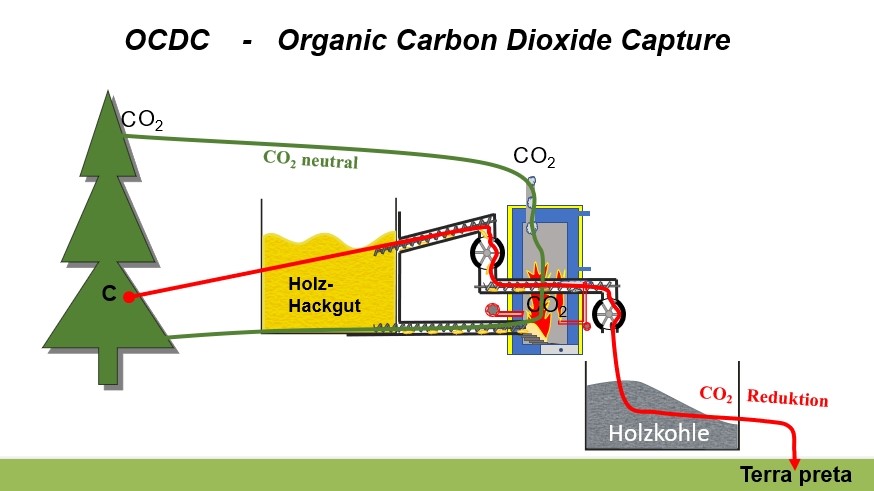
CDR – Carbon Dioxide Removal is easy to achieve with Terra preta:

OCDC stands for the long-term binding of CO2 in the topsoil.
Good and fertile topsoil has a high humus content.
Humus works like a sponge, storing water and nutrients when there is an abundance and releasing it – in fine doses – to the plants when there is a need or even a shortage.
How the CO2 from the air can be captured is shown by the age-old example of the earth’s history.
The following video shows the first step:
What happened then?
A very, very long time ago, our earth had an atmosphere that consisted almost entirely of CO2.
Just as our neighboring planets Mars and Venus still have today. They have atmospheres of 95 and 96% CO2. One breath and you’re dead.
In our case, it was the plants that took the CO2 from the air, or rather from the poison gas cloud of that time. In countless cycles of germination, growth and death, they formed today’s deposits of coal, crude oil and natural gas in the ground.
Due to the lack of oxygen at the time, the plants could not rot and so layers of biomass, some kilometers thick, formed, which were covered by continental shifts, earthquakes, floods and mudslides.
These deposits, formed over many millions of years, are now used as an energy source for a very short period of time, and this is where our current climate problem lies.
Sounds bad – but it’s not, because what worked back then still works today.
Which was not possible back then because there was too much co2 and not enough oxygen.
So we have to help a little.
To make plants stable, we have to build them somewhere long-term or char them.
How can plants be turned into charcoal?
There are many techniques and raw materials for making biochar.
The most easily produced type of biochar is the well-known and well-tried charcoal.
Our recommendation is to use inferior wood assortments for this, which are created during forest maintenance.
Old, sick and surplus trees are removed from the forest.
The harvested wood is piled up to dry. It is important that the wood has a clear distance from the floor when it is stored.
The essential step in charring is pyrolysis. The material is heated to at least 300 ° C in the absence of air. This process is tried and tested.
The following video shows us how the entire process works:
Terra preta – the black soil
The best use for biochar in general, and charcoal in particular, is in the production of terra preta.
This not only binds the excess CO2 from the air, but also alleviates or even completely eliminates the lack of C (carbon) in the soil.
We also have a video for this:
… or just google Terra preta.
Close-to-nature forest management is climate protection
The increasingly widespread notion that a forest left to its own devices is a permanent carbon sink is a misconception.
The opposite is the case. In a near-naturally managed forest, excess, diseased and beetle-infested trees are removed. If this does not happen, then the neighboring trees will also be infected with diseases and pests.
The trees removed during forest maintenance are an excellent and climate-neutral fuel.
The healthy trees of a well-kept forest have more space, nutrients, water and light. They can therefore grow better and take a lot of CO2 out of the atmosphere. These trees can then become very old and, after being harvested, serve as timber or are processed into furniture.
